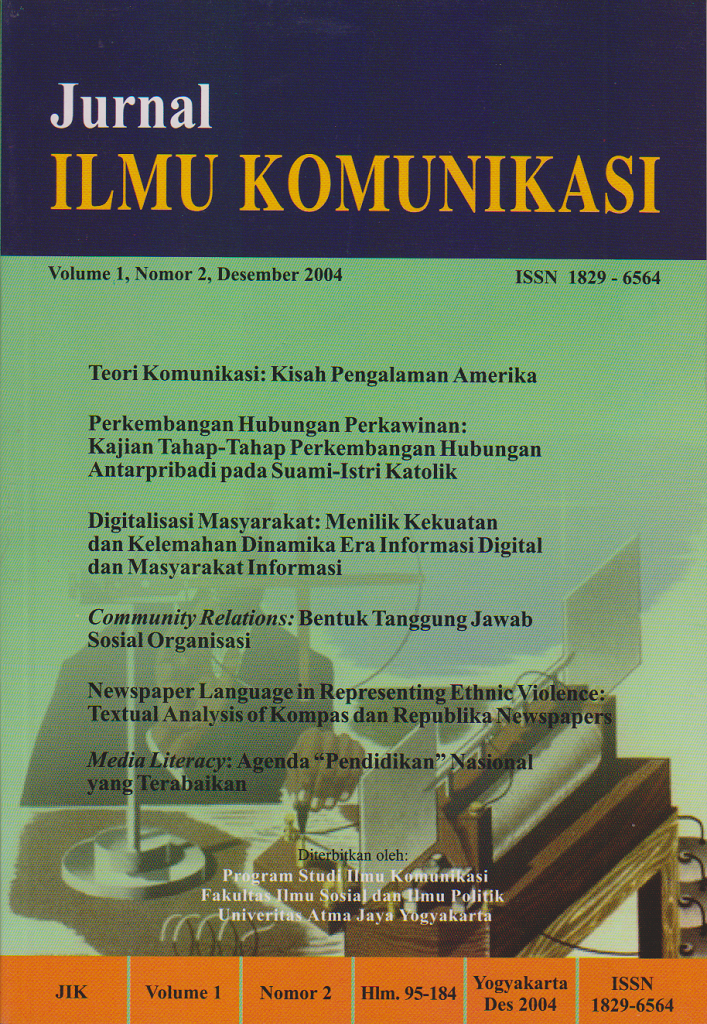Newspaper Language in Representing Ethnic Violence: Textual Analysis of Kompas dan Republika Newspapers
DOI:
https://doi.org/10.24002/jik.v1i2.165Abstract
The reconceptualization of ethnicity came to its peak when the New Order regime introduced the policy of ‘suku’ (ethnic), ‘agama’ (religion), ‘ras’ (racial) or ‘antar golongan’ (inter-group). The policy, known as SARA, was meant to limit and control public interpretation over all socio-political conflicts that may endanger national stability and to restrict languages used in the news media. The policy had became the main foundation of all government policies related to society. Conflicts should be avoided and difference within society was intolerable. The Indonesian press then faced a dilemma when it came to reporting issues of ethnicity. On one side, they had an obligation to report the news to public; on the other side, the concept of SARA had become an unwritten law to restrict the press from reporting the issue. Further, the government could revoke the publishing permits without any warning it thought that the press had broken the law. The objective of the research was to define and analyze the usage of language in national newspapers in representing ethnicity issues. The analysis focused on the 1997 ethnic violence in West Kalimantan.Downloads
Published
How to Cite
Issue
Section
License
Jurnal ILMU KOMUNIKASI is an academic journal. As such, it is dedicated to the open exchange of information. For this reason, JIK is freely available to individuals and institutions. Authors who publish in Jurnal ILMU KOMUNIKASI will release their articles under the Creative Commons Attribution (BY) License. This license allows anyone to copy and redistribute the article in any medium or format as well as remix, transform, and build upon the material for any purpose, even commercially as long as they credit the authors for the original creation. For details of the rights authors grants users of their work, see the "human-readable summary" of the license, with a link to the full license. (Note that "you" refers to a user, not an author, in the summary)
 This work is licensed under a Creative Commons Attribution 4.0 International License.
This work is licensed under a Creative Commons Attribution 4.0 International License.














